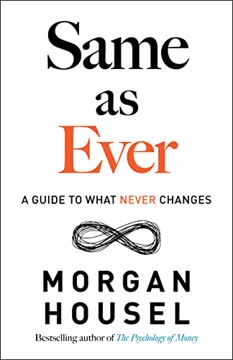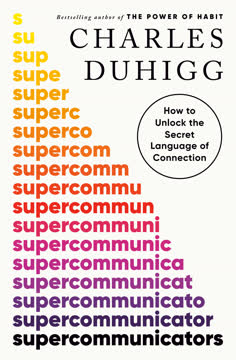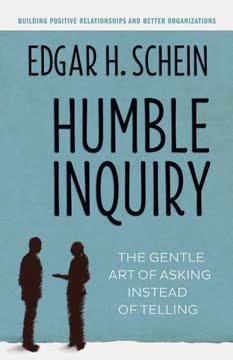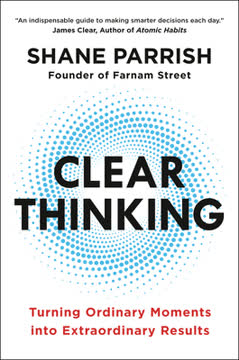Key Takeaways
1. Questioning is a powerful tool for decision-making, creativity, connection, and leadership
Questions enable us to "organize our thinking around what we don't know."
Questioning as a cognitive tool. Questions serve as a flashlight, illuminating unknowns and guiding our thinking. They help us make better decisions by challenging assumptions, spark creativity by identifying problems and possibilities, deepen connections with others through genuine curiosity, and enhance leadership by encouraging exploration and learning.
Benefits of questioning:
- Improves critical thinking and problem-solving skills
- Stimulates innovation and creativity
- Enhances empathy and interpersonal relationships
- Promotes continuous learning and adaptability
By developing a questioning habit, we can navigate complexity, make more informed choices, and foster personal and professional growth. The key is to ask the right questions at the right time, whether to ourselves or others, to gain insights and drive positive change.
2. Overcome the five enemies of questioning: fear, knowledge, bias, hubris, and time
"The simple act of asking, and of listening without comment or judgment" is powerful.
Identifying obstacles. To harness the power of questioning, we must first recognize and overcome common barriers that prevent us from asking questions:
- Fear: Worry about appearing ignorant or incompetent
- Knowledge: Overconfidence in existing expertise
- Bias: Preconceived notions that limit our perspective
- Hubris: Excessive pride or arrogance
- Time: Perceived lack of time for reflection and inquiry
Strategies for overcoming barriers:
- Embrace a growth mindset and view questions as opportunities for learning
- Practice intellectual humility by acknowledging the limits of your knowledge
- Actively seek diverse perspectives to challenge your biases
- Allocate dedicated time for reflection and questioning
- Cultivate curiosity and wonder in everyday situations
By consciously addressing these obstacles, we can create an environment that encourages and values questioning, leading to more thoughtful decision-making and innovative problem-solving.
3. Make better decisions by challenging assumptions and considering multiple perspectives
"If we're generally better off saying yes to bold decisions, why not say yes to this one?"
Critical thinking for decision-making. Effective decision-making requires us to challenge our assumptions, consider alternative viewpoints, and gather relevant information. By asking probing questions, we can uncover hidden biases, expand our options, and make more informed choices.
Key questions for better decision-making:
- What am I assuming, and why?
- What evidence supports or contradicts my position?
- How might someone with a different perspective view this situation?
- What are the potential long-term consequences of this decision?
- Am I considering a sufficient range of options?
By systematically questioning our thought processes and seeking out diverse perspectives, we can avoid common decision-making pitfalls such as confirmation bias, short-term thinking, and narrow framing. This approach leads to more robust and balanced decisions that are better equipped to withstand scrutiny and adapt to changing circumstances.
4. Spark creativity by finding problems worth solving and embracing the creative process
"Creativity is a consequence of sheer productivity."
Problem-finding as a creative catalyst. True creativity often begins not with having all the answers, but with identifying the right questions and problems to solve. By cultivating curiosity and actively seeking out challenges, we can uncover opportunities for innovation and creative expression.
Steps to enhance creativity through questioning:
- Observe your environment with fresh eyes
- Ask "Why?" and "What if?" to challenge the status quo
- Reframe problems as opportunities
- Generate multiple possible solutions
- Embrace failure as a learning experience
The creative process is iterative and often messy. By adopting a questioning mindset, we can push through obstacles, refine our ideas, and ultimately produce more innovative and impactful work. Remember that quantity often leads to quality in creative pursuits, so don't be afraid to generate and explore numerous ideas.
5. Build stronger relationships through authentic, open-ended questions and active listening
"When we feel you're trying to influence them they put their guard up."
Deepening connections through inquiry. Meaningful relationships are built on understanding and empathy. By asking thoughtful, open-ended questions and practicing active listening, we can create deeper connections with others and foster more authentic interactions.
Strategies for relationship-building questions:
- Ask "How?" and "Why?" instead of yes/no questions
- Show genuine interest in others' experiences and perspectives
- Use follow-up questions to delve deeper into responses
- Practice empathetic listening without judgment
- Share your own thoughts and feelings to encourage reciprocity
By approaching conversations with curiosity and openness, we create an environment where people feel valued and understood. This not only strengthens personal relationships but also enhances professional collaborations and team dynamics.
6. Lead effectively by modeling curiosity and fostering a culture of inquiry
"Leaders must be role models for good thinking."
Leadership through questioning. Effective leaders in the 21st century must embrace uncertainty and cultivate a culture of continuous learning and innovation. By modeling curiosity and encouraging questioning at all levels of an organization, leaders can drive engagement, creativity, and adaptability.
Key leadership practices:
- Ask open-ended questions to stimulate thinking and problem-solving
- Encourage diverse perspectives and constructive dissent
- Create safe spaces for experimentation and failure
- Regularly challenge assumptions and established processes
- Invest in developing questioning skills throughout the organization
By fostering a culture of inquiry, leaders can tap into the collective intelligence of their teams, identify emerging opportunities and threats, and build more resilient and innovative organizations. This approach also helps develop future leaders who are equipped to navigate an increasingly complex and uncertain business landscape.
7. Develop a questioning habit to navigate an increasingly complex and uncertain world
"The way to get better at asking questions is to ask more questions."
Cultivating a questioning mindset. In a rapidly changing world, the ability to ask insightful questions and adapt to new information is crucial for personal and professional success. By developing a habit of questioning, we can become more agile thinkers and problem-solvers.
Practical tips for developing a questioning habit:
- Start each day with a thought-provoking question
- Keep a journal of interesting questions and insights
- Practice questioning techniques in everyday conversations
- Seek out diverse sources of information and perspectives
- Regularly challenge your own beliefs and assumptions
By making questioning a consistent practice, we can enhance our critical thinking skills, foster creativity, and become more adaptable in the face of change. This habit not only improves our decision-making and problem-solving abilities but also cultivates a sense of curiosity and wonder that enriches our personal and professional lives.
Last updated:
FAQ
What's The Book of Beautiful Questions about?
- Focus on Inquiry: The book emphasizes the importance of asking the right questions to enhance decision-making, creativity, connection, and leadership. It argues that questioning is a vital skill that can lead to better outcomes in various aspects of life.
- Four Key Areas: Warren Berger categorizes the questions into four main parts: decision-making, creativity, connecting with others, and leadership. Each section provides specific questions designed to provoke thought and inspire action.
- Transformative Potential: The book illustrates how effective questioning can transform personal and professional lives, encouraging readers to embrace curiosity and inquiry as tools for growth.
Why should I read The Book of Beautiful Questions?
- Enhance Skills: Reading this book can help you become a better thinker, partner, problem-solver, and leader by equipping you with a toolkit of powerful questions.
- Transformative Resource: It serves as a transformational resource for anyone looking to make better decisions and lead more effectively, as noted by Dorie Clark, a bestselling author.
- Practical Application: The book provides practical strategies and over 200 questions that can be applied to everyday situations, making it a useful guide for personal and professional growth.
What are the key takeaways of The Book of Beautiful Questions?
- Power of Questions: The central takeaway is that asking thoughtful questions can lead to deeper insights and better decisions. Questions are framed as tools for exploration and understanding.
- Framework for Inquiry: Berger introduces a framework for effective questioning, including the "Why?," "What If?," and "How?" approach, which can be applied in various contexts.
- Cultural Shift: It advocates for a cultural shift in organizations to embrace questioning as a norm, which can lead to greater innovation and employee engagement.
What are the best quotes from The Book of Beautiful Questions and what do they mean?
- “The simplest and most powerful thing that happens when we ask ourselves questions is that it forces us to think.”: This quote highlights the fundamental role of questioning in critical thinking and decision-making.
- “Creativity often depends on our ability, and willingness, to grapple with challenging questions that can fire the imagination.”: This emphasizes that creativity is not just about having ideas but also about asking the right questions to unlock potential.
- “All of us are smarter than any of us.”: This quote emphasizes the collective intelligence that emerges from collaborative questioning and dialogue, suggesting that diverse perspectives lead to better solutions.
What are the five enemies of questioning mentioned in The Book of Beautiful Questions?
- Fear: Fear of looking foolish or being judged can inhibit our willingness to ask questions. This fear often grows as we age, leading to a reluctance to inquire.
- Knowledge: The more we know, the less we feel the need to ask questions. This can create a “trap of expertise” where we become complacent in our understanding.
- Bias: Our biases can prevent us from considering alternative viewpoints or questions that challenge our beliefs. This can limit our ability to think critically.
- Hubris: A sense of overconfidence can lead us to believe we don’t need to ask questions. This can result in a lack of openness to new ideas and perspectives.
- Time: The perception of not having enough time can discourage questioning. In a fast-paced world, we often prioritize quick decisions over thoughtful inquiry.
How can I foster a questioning habit according to The Book of Beautiful Questions?
- Start Small: Begin by asking simple questions in everyday situations to build your confidence. Gradually increase the complexity of your questions as you become more comfortable.
- Practice Regularly: Make questioning a routine part of your daily life. Set aside time to reflect on your thoughts and ask yourself probing questions.
- Overcome Fear: Address the fear of asking questions by reminding yourself that inquiry is a sign of strength, not weakness. Embrace the idea that asking questions can lead to growth and understanding.
What types of questions are effective for decision-making in The Book of Beautiful Questions?
- Self-Reflective Questions: Questions like “Why do I believe what I believe?” encourage introspection and help identify biases. This can lead to more informed decision-making.
- Exploratory Questions: Questions such as “What would an outsider do?” can provide new perspectives on a decision. This helps to broaden your thinking and consider alternative options.
- Future-Oriented Questions: Asking “What would ‘future me’ decide?” can help you think about long-term implications and outcomes of your choices.
How does The Book of Beautiful Questions suggest we connect with others?
- Ask Open-Ended Questions: Instead of generic questions, use open-ended ones that invite deeper responses, such as “What are you most passionate about?” This encourages meaningful dialogue.
- Practice Active Listening: Listening attentively and responding with follow-up questions shows genuine interest. This builds rapport and strengthens relationships.
- Replace Judgment with Curiosity: Approach conversations with a mindset of curiosity rather than judgment. This fosters a more open and understanding environment for discussion.
What role does creativity play in The Book of Beautiful Questions?
- Creativity as Inquiry: The book posits that creativity often stems from asking the right questions. Engaging with challenging questions can spark innovative ideas and solutions.
- Overcoming Blocks: It provides strategies for overcoming creative blocks through questioning, such as asking “What if I go looking for problems?” This encourages a proactive approach to creativity.
- Continuous Evolution: The book emphasizes the importance of evolving creatively by regularly asking questions that challenge the status quo and inspire new directions.
How can I use questions to improve my leadership skills as suggested in The Book of Beautiful Questions?
- Visionary Questions: Ask questions like “What can we do to right this wrong?” to inspire action and motivate your team. This encourages a culture of inquiry and problem-solving.
- Encourage Curiosity: Foster an environment where questioning is safe and encouraged. This can lead to more innovative thinking and collaboration among team members.
- Reflect on Decisions: Use questions to evaluate your leadership decisions, such as “How would I later explain this decision to others?” This promotes accountability and thoughtful leadership.
How can questioning help with decision-making according to The Book of Beautiful Questions?
- Clarifies Objectives: Questions help clarify what you are trying to achieve, allowing for a more focused approach to decision-making. By asking, "What am I really trying to decide here?" you can hone in on your true goals.
- Identifies Assumptions: Questioning helps uncover underlying assumptions that may influence decisions, enabling you to challenge and reassess them. This can lead to more informed and rational choices.
- Expands Options: By asking "What if?" and "How might we?" you can explore a wider range of possibilities, leading to innovative solutions that may not have been considered otherwise.
How can I apply the concepts from The Book of Beautiful Questions in my workplace?
- Encourage a Questioning Culture: Foster an environment where asking questions is welcomed and encouraged. Implement regular "Ask Me Anything" sessions to promote open dialogue and idea sharing.
- Use Questions in Meetings: Start meetings with open-ended questions to stimulate discussion and engagement. This can help shift the focus from simply reporting to collaborative problem-solving.
- Train Employees in Questioning: Provide training on effective questioning techniques, such as the "Why? What If? How?" framework, to enhance critical thinking skills across the organization.
Review Summary
The Book of Beautiful Questions receives mostly positive reviews for its exploration of the power of questioning. Readers appreciate the practical examples and exercises for developing questioning skills, though some find it repetitive. Many highlight its value for personal growth, creativity, decision-making, and leadership. The book is praised for its applicability to various aspects of life and its potential to improve relationships and spark new ideas. Some readers suggest it could be condensed, while others consider it a must-read for developing curiosity and critical thinking.
Similar Books









Download PDF
Download EPUB
.epub digital book format is ideal for reading ebooks on phones, tablets, and e-readers.






